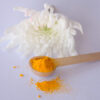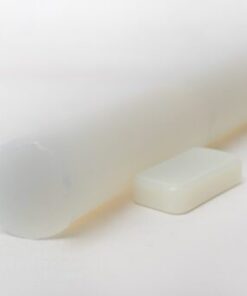Citric Acid Anhydrous – 1kg
R80,00
Citric Acid Anhydrous – 1kg – Citric Acid Anhydrous is essential for cosmetic, soap, and bath product formulations. It serves multiple purposes.
3 in stock
Citric Acid Anhydrous – 1kg
Key Features:
-
Acidic Nature for Optimal pH Balance
Citric Acid is a natural, weak organic acid. It helps maintain the ideal pH balance in cosmetic, soap, and bath formulations. With its sour taste, it serves as an acidulant, contributing to product stability. -
Powdered Form for Easy Integration
The powdered form of Citric Acid Anhydrous dissolves quickly in water. This makes it easy to incorporate into various cosmetic, skincare, and bath products, ensuring consistency. -
Natural Preservative
Citric Acid naturally lowers the pH of products, creating an environment that prevents bacterial growth. This extends the shelf life of soaps, bath bombs, lotions, and other cosmetics. -
Chelating Agent for Enhanced Effectiveness
As a chelating agent, Citric Acid binds metal ions. This helps remove hard water minerals, improving the feel and performance of skin and hair care products.
Common Uses in the Cosmetic, Soap, and Bath Industries
-
Soap Making
Citric Acid adjusts the pH in soap making. It helps ensure the soap is not too alkaline. This creates a smoother, skin-friendly product. -
Bath Bombs and Fizzing Products
Citric Acid is crucial for bath bombs. It reacts with baking soda to create the fizzing effect, making the bath experience more enjoyable. -
Cosmetics and Skincare
In cosmetics, Citric Acid acts as a gentle exfoliant. It removes dead skin cells and reveals smoother skin. It also balances the pH in skincare products. -
Shampoos and Hair Care
Citric Acid balances the pH of hair care products. It helps maintain natural oils in the scalp and improves shine and manageability.
Benefits for the Cosmetics and Soap Industries
-
Exfoliation
Citric Acid exfoliates the skin by removing dead skin cells. It leaves the skin softer and smoother, ideal for facial scrubs and body lotions. -
Preservation and Shelf Life
By lowering pH, Citric Acid inhibits microbial growth. This natural preservation helps extend the shelf life of soaps and bath products. -
Enhanced Texture and Performance
Citric Acid improves the texture of soaps and lotions. It ensures smooth consistency and reduces any grittiness. -
Safe and Gentle for Skin
When used in appropriate amounts, Citric Acid is safe for sensitive skin. It provides gentle exfoliation and pH balance without irritation.
Why Choose Citric Acid Anhydrous?
Citric Acid Anhydrous is essential for cosmetic, soap, and bath product formulations. It serves multiple purposes, from pH adjustment to natural preservation. Whether you’re creating handmade soap, luxurious bath products, or skincare treatments, Citric Acid enhances the quality and shelf life of your creations.
Order today to elevate your formulations and create high-quality products!
| Weight | 1 kg |
|---|---|
| Dimensions | 15 × 15 × 5 cm |
Related products
Glycerine Melt and Pour Soap
Glycerine Melt and Pour Soap










